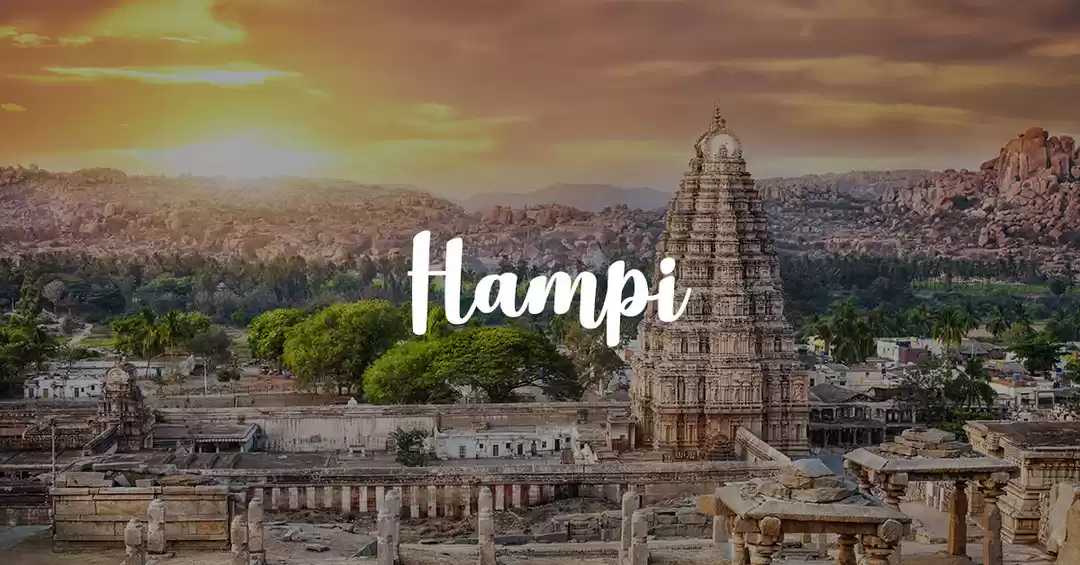Hampi-Karnataka: Located in the heart of Karnataka, India, it is a UNESCO World Heritage Site that beckons travelers and history buffs alike with its enduring attraction – Hampi. This ancient city, once the flourishing capital of the Vijayanagara Empire, today stands as a testament to India’s rich cultural heritage and architectural prowess. Let’s explore the fascinating history, breathtaking architecture and vibrant essence of Hampi.
A Glimpse of History Vijayanagara:
Hampi’s history dates back to the 14th century when it was the royal capital of the Vijayanagara Empire. Founded by Harihara I and Bukka Raya I in 1336, the empire reached its peak under Krishnadevaraya in the 16th century. Known for its wealth, glory and military power, Vijayanagara was a prominent Hindu state that attracted merchants, scholars and artisans from all over the world.
The Magnificent Ruins of Hampi:
The ruins of Hampi are spread over an area of about 4,100 hectares and contain more than 1,600 preserved ruins. These ruins include magnificent temples, royal complexes, water structures, market streets and forts. Each structure tells the story of a bygone era characterized by intricate carvings, steep gopurams (entrances) and monolith sculptures.
Must see sites in Hampi:

Virupaksha Temple: Dedicated to Lord Shiva, this ancient temple is one of the oldest functioning temples in India, dating back to the 7th century. Its towering gopuram and intricate sculptures make it a marvel of Dravidian architecture.
Vijaya Bittala Temple: Known for its iconic stone chariot and musical pillar, this temple complex is a masterpiece of Vijayanagara architecture. The musical pillars emit various musical notes when tapped, demonstrating the empire’s advanced architectural and engineering skills.
Lotus Mahal: A fusion of Hindu and Islamic architectural styles, this elegant structure served as a royal palace for queens. Its finely designed archways and lotus-shaped domes reflect the cultural synthesis of the empire.
Elephant Stables: These huge structures once housed the royal elephants of Vijayanagara. Their imposing architecture, featuring domed rooms and ornate pillars, provides an insight into the imperial reverence for these majestic creatures.
Hampi Beyond Architecture:
Beyond its architectural diversity, Hampi offers a cultural tapestry rich in traditions, festivals and folklore. The local cuisine, infused with the unique flavors of Karnataka, tantalizes the taste buds with dishes like Bisbele Snan (spicy lentil rice) and Obattu (sweet flatbread).
The annual Hampi festival celebrates this cultural diversity through music, dance performances and vibrant processions, giving visitors a glimpse of Karnataka’s artistic heritage.
Exploring Hampi:
When planning a trip to Hampi, consider the following tips to make the most of your experience:
Best time to visit: Hampi is best explored during the winter months (October to February) when the weather is pleasant, making it ideal for sightseeing.
Accommodation: Choose guesthouses or traditional hotels in Hampi or nearby Hospet for a comfortable stay near the archaeological site.
Local Transport: Hire a bicycle or moped to explore Hampi’s extensive ruins at your own pace. Guided tours are also available for a deeper understanding of the historical significance of each site.
Hampi’s UNESCO status:

Designated as a UNESCO World Heritage Site in 1986, Hampi stands as a symbol of India’s commitment to preserving its cultural heritage. Efforts to preserve and restore ancient structures continue amid the challenges of urbanization and environmental factors.
Hampi, Karnataka, is more than a collection of ruins – it is a living testament to the glory and resilience of the Vijayanagara Empire. Whether you are attracted by its architectural marvels, intrigued by its historical significance or simply looking for a cultural immersion, Hampi promises an unforgettable journey through time. Explore its temples, walk through its rock-strewn landscapes and immerse yourself in the essence of a city that continues to captivate hearts and minds centuries after its golden age.
Read Also: Amritsar the heart of Punjab
![]()






One thought on “Hampi-Karnataka”